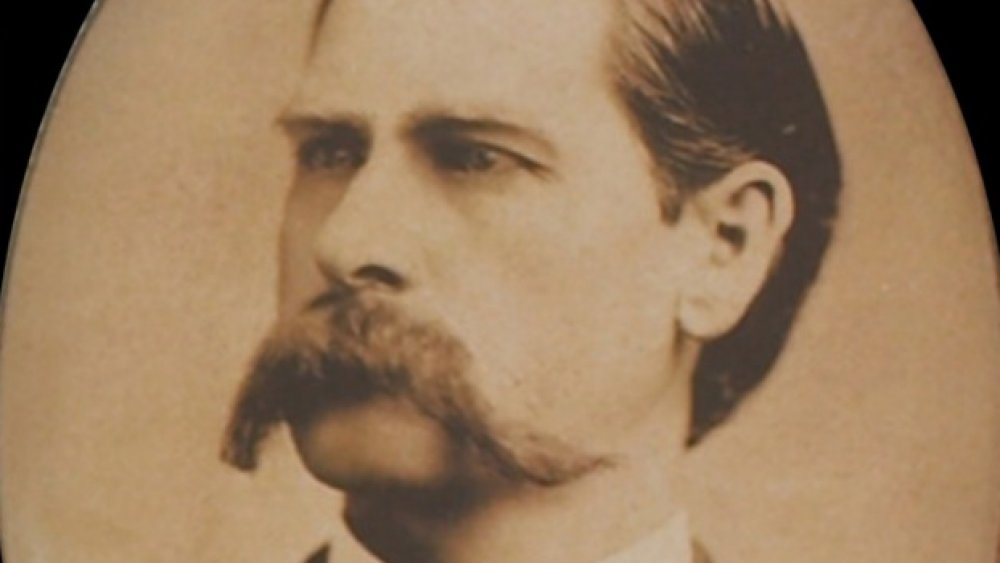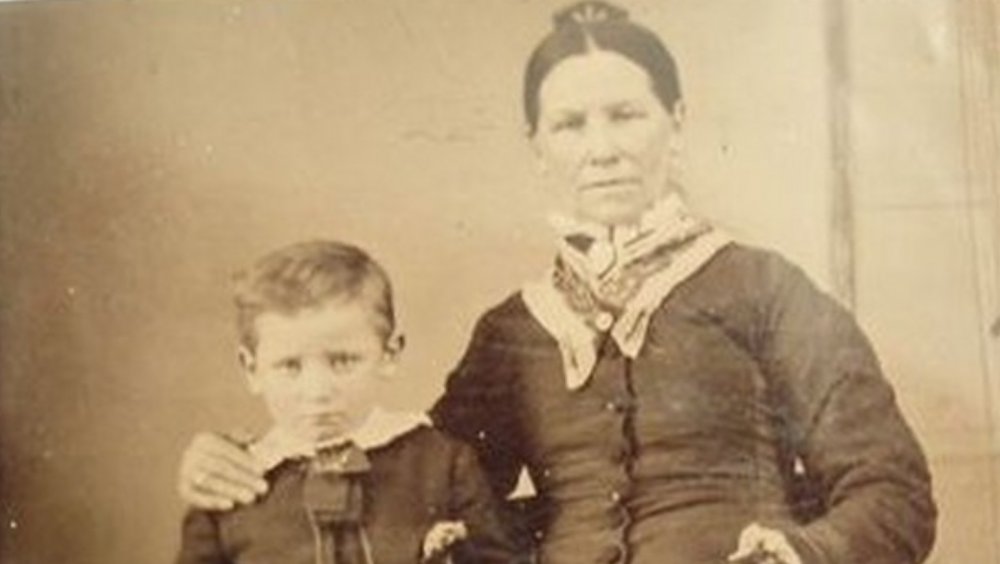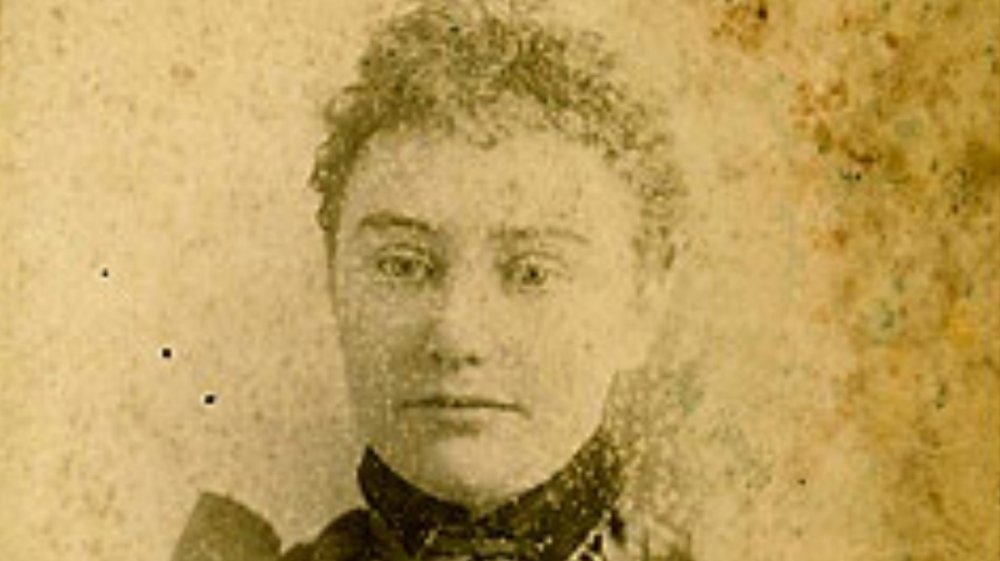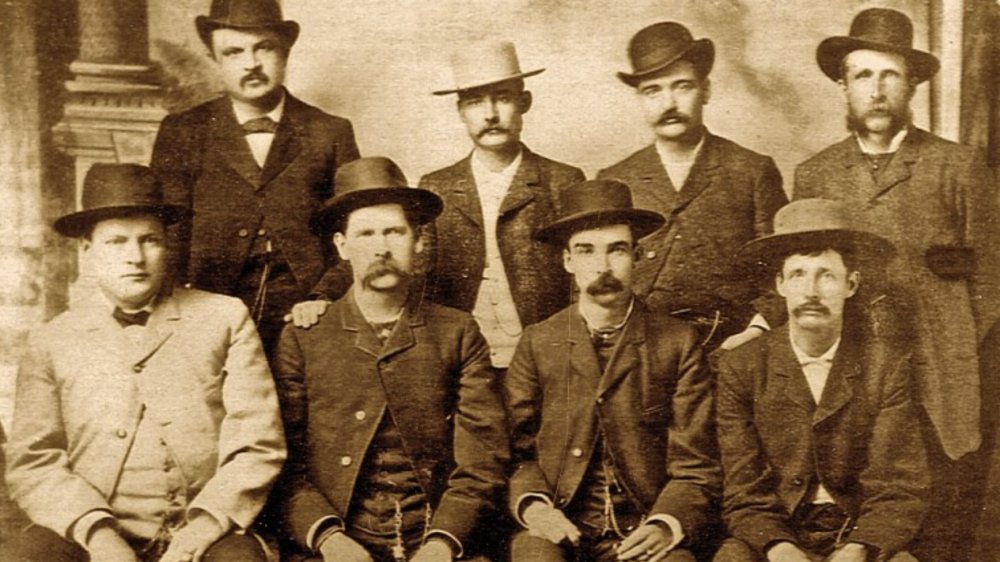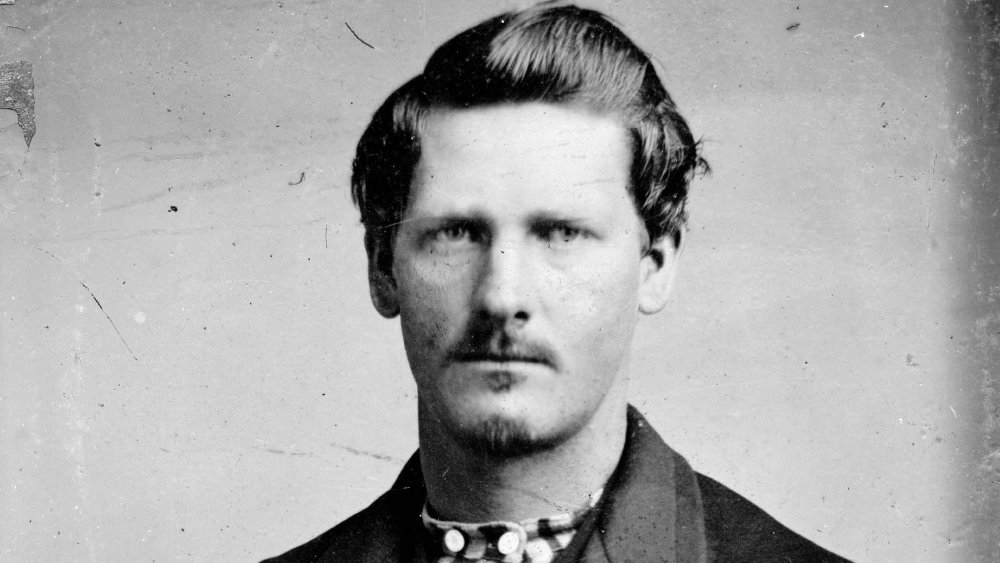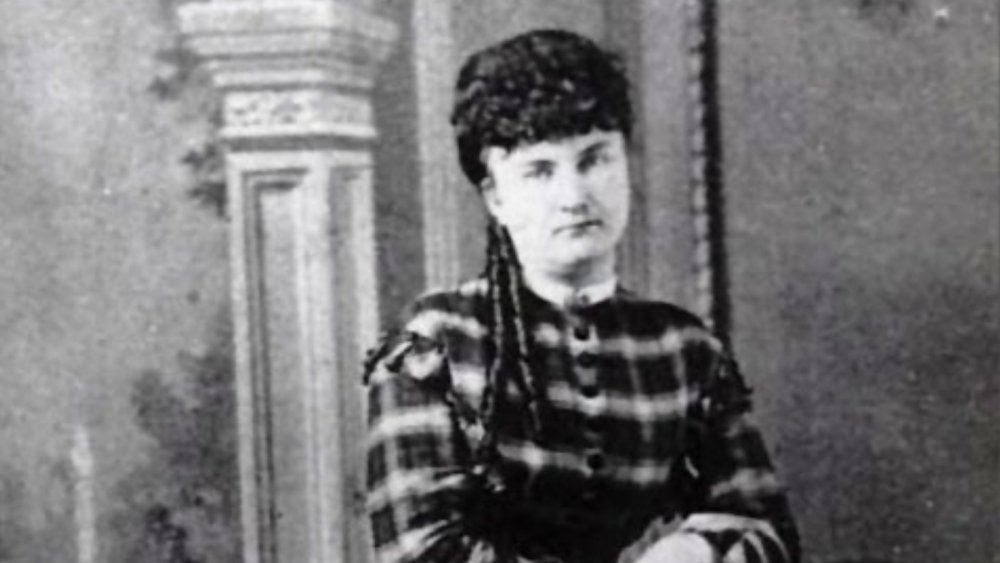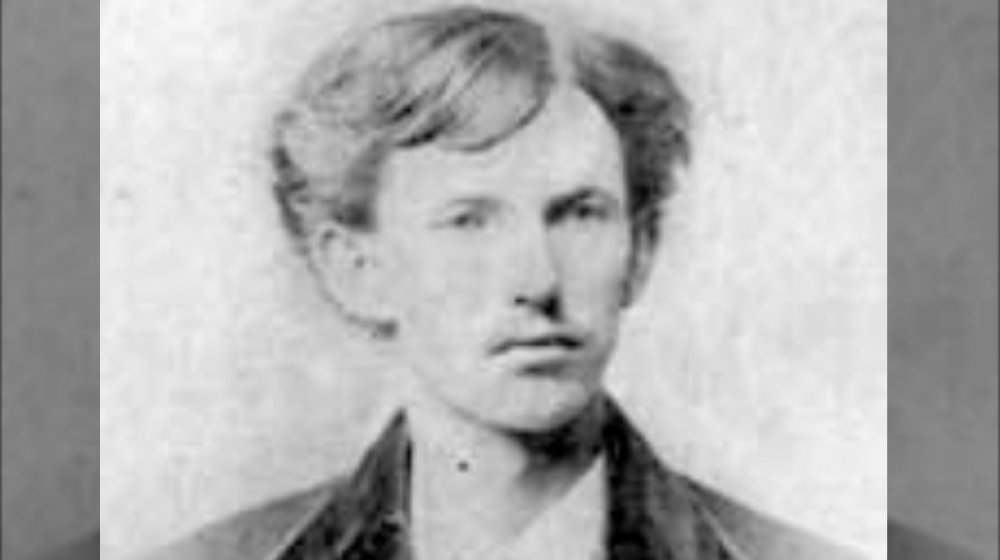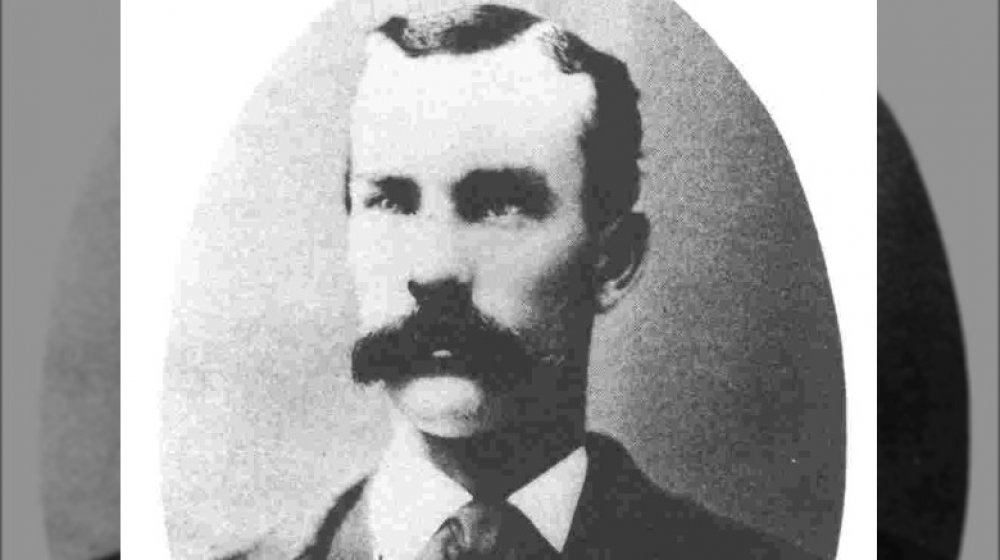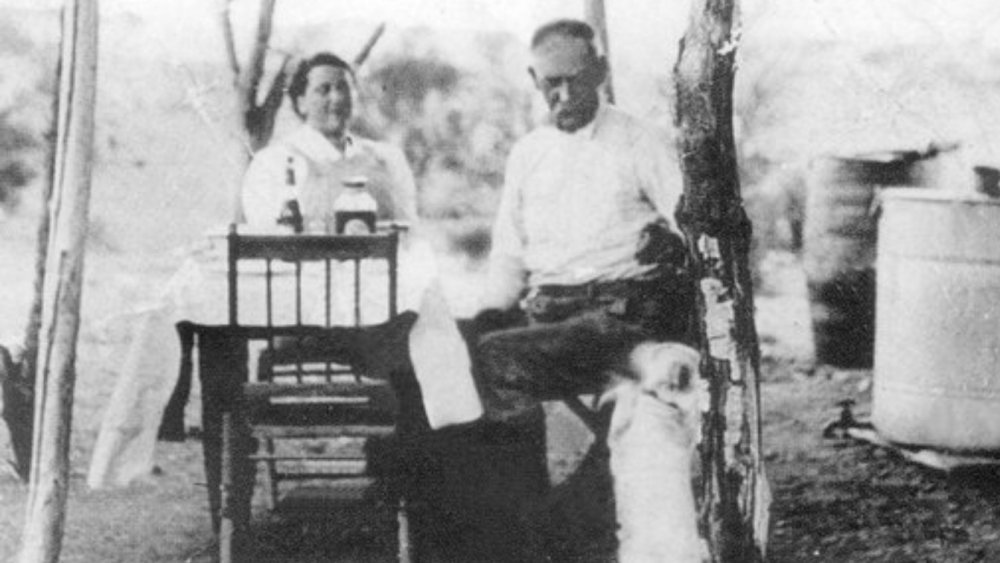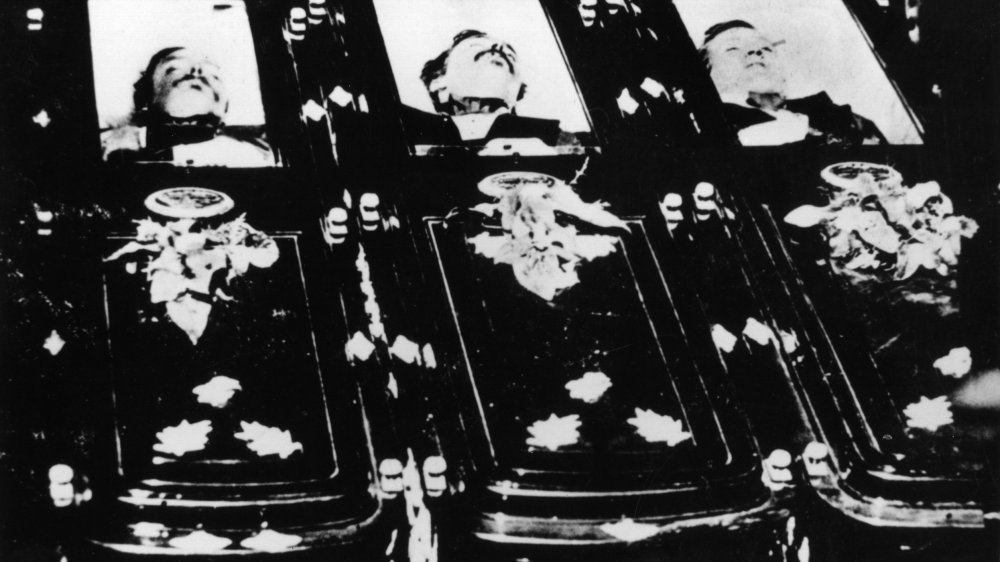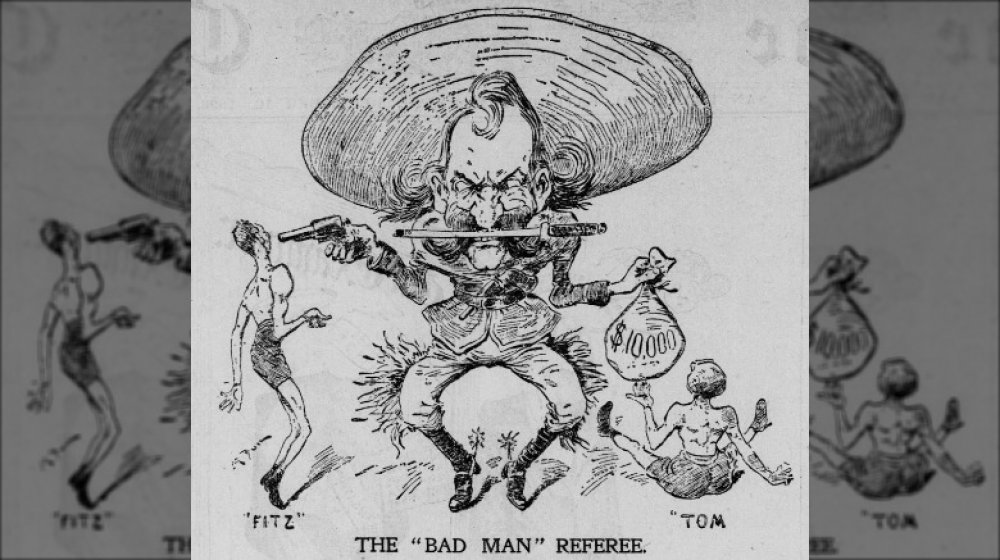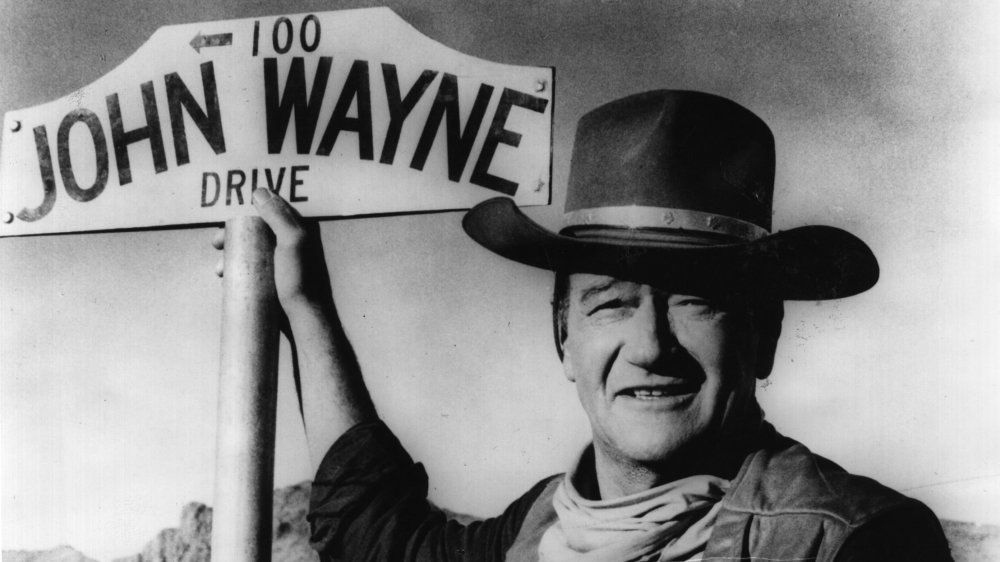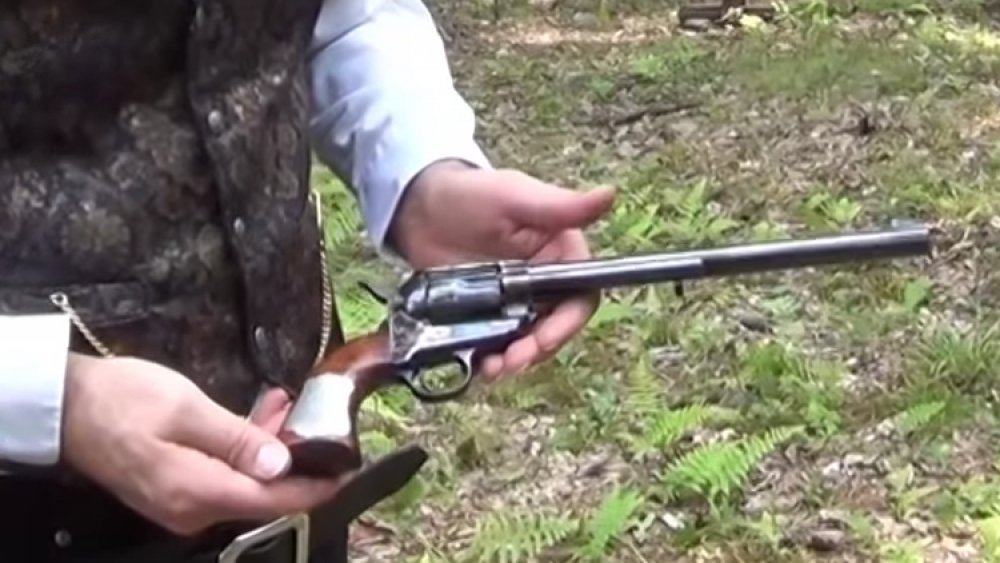The Incredible Life Of Wyatt Earp
Wyatt Earp: gambling gunslinger, lawless lawman, and the reason people regard the Gunfight at the O.K. Corral as way better than Okay. A guy whose reputation and mustache preceded him, Earp famously entered a Tombstone saloon, saw the guy from Sling Blade bullying people, and proceeded to slap the potted meat out of his mouth before asking, "You gonna do something, or just stand there and bleed?" Sling Blade guy replied by silently bleeding. Oh wait, that was Kurt Russell humiliating Billy Bob Thornton in the movie Tombstone. However, the real-life Earp shared an even cooler anecdote.
According to the Ford County Historical Society, in 1896, Earp recalled how he unmanned Clay Allison, a man described by author John Richard Simmons as "a famous gunfighter with a club foot and a mean streak." In 1878, Allison came to Dodge City to shoot Earp. However, when the crossed paths outside a saloon, Allison's mean streak became a yellow streak. Seeing Earp was ready to grab Allison's gun with one hand and shoot him with the other, Allison relented: "I guess I'll go round the corner." Earp replied, "I guess you'd better." Allison soon got the heck out of Dodge.
Earp's near-showdown with Allison was probably as real as the time he backhanded Bad Santa. In fact, much of his biography was embellished, largely by Earp himself, per the LA Times. In that sense, Earp's life story was literally the stuff of Wild West legend.
Wyatt Earp's meandering childhood
Born on March 19, 1848, Wyatt Earp (shown above with his mother, Virginia Ann Cooksey Earp) seemed to have 50 dads rolled into one. As author Allen Barra laid out, Wyatt's father, Nick, worked as a farmer, storekeeper, constable, judge, justice of the peace, and lawbreaking bootlegger. He also recruited and drilled Union soldiers during the Civil War. Something of a 19th-century nomad, Nick dragged the family from city to city, occasionally from state to state, for various reasons — like when he got fined for bootlegging while working as a constable — and sometimes for seemingly no reason. By the mid-to-late 1850s, Wyatt and his brothers, James and Virgil, had lived in seven different homes.
Moving so frequently must have been a task because the Earps were no small family. Wyatt had four brothers, one half-brother, and three sisters. (His sisters, sadly, didn't make it past childhood). A 13-year-old Wyatt would attempt his own journey after the Civil War broke out. He detested farm work and ran away from home in hopes of fighting like his two oldest brothers and half-brother. Wyatt apparently ran into his father at the recruiting office, ending his not-so-great escape from the doldrums of hoeing corn.
How Wyatt Earp went from lawman to outlaw
In late 1869, a 21-year-old Wyatt Earp met Urilla Sutherland. If it wasn't love at first sight, then it was love at not-that-many-sights because just after Earp turned 22, they exchanged wedding vows, with Earp's father officiating the ceremony. As detailed in Inventing Wyatt Earp, in 1870, Urilla was pregnant and Earp was constable of Lamar, Missouri, a place that had no jail and where his father worked as a justice of the peace. Whatever hopes Wyatt had for their future died with his wife and child, possibly during labor. Urilla's brothers blamed Wyatt for her death, and the grieving in-laws brawled.
Earp sold the home he had recently purchased for his family, abandoned his job, and embraced his inner outlaw. In 1871, he, John Shown, and Edward Kennedy allegedly stole two horses. However, Shown's wife claimed that Earp and Kennedy got Shown drunk to recruit him for the horse heist. She further alleged that they threatened to kill Shown if he incriminated them in court. Guilty or not, Earp never faced justice because sometime after his arrest, he pulled a Houdini.
When Wyatt Earp got the hell into Dodge
Earp started his law career in Kansas as an accused criminal. Charged with horse thievery in Indian Territory in the 1870s, he absconded to Wichita, where his brother, James, lived, according to History. There, Wyatt Earp provided security for saloons and later got hired as a policeman. An intimidating figure, he excelled at pistol-whipping criminals and whipping them in fistfights. His cop buddy, Bat Masterson, remarked, "There were few men in the West who could whip Earp in a rough-and-tumble fight."
Earp got fired for winning a rough-and-tumble fight with William Smith, a candidate for marshal who made the grave mistake of insulting the incumbent, who was Earp's boss. The once-more unemployed Earp relocated to Dodge City. Per the Dodge City Daily Globe he worked seasonally as an assistant marshal or deputy for several years. In spring and summer, he made his living as a cop. History wrote that for the rest of the year, he gambled in Texas and New Mexico. In Dodge, he maintained order but seemed less concerned about the law bit. He allowed illegal drinking and prostitution, imposing fines to profit off of the crime instead of stopping it outright. Earp returned to Dodge in 1883 as part of the ironically named "Peace Commission" during the famous "Saloon Wars." The commission didn't promise peace but rather threatened war after their friend, Luke Short, got kicked out of Dodge.
Wyatt Earp the 'fighting pimp'
While working as a Dodge City police officer, Wyatt Earp laid down the law and laid down with prostitutes. Author Laurence Yadon noted that detractors referred to Wyatt and his partner in crime-fighting, Bat Masterson, as "the 'Fighting Pimps' because of their affinity for prostitutes and other women of questionable morality." As recounted in Stagecoach to Tombstone, after moving to Tombstone, Wyatt and his brothers were branded the Fighting Pimps again. Some writers have argued that this wasn't merely a smear.
Roger Jay observed that in 1872, Wyatt Earp resided at a Peoria, Illinois brothel, per city directory listings. He and his brother, Morgan, would be arrested there during a February raid. Three months later, they were arrested at another brothel: the antiseptic-sounding McClellan Institute, which a local paper described as a "hotbed of iniquity." It's unclear if Wyatt was found getting hot in bed with anyone, but a court might have found him guilty of pimping because he and Morgan each received hefty $44.55 fines. Later that same year, Wyatt was arrested again, this time on a gunboat said to be occupied by pimps and prostitutes. And once again, he got slapped with a pimp-sized fine.
The four 'wives' of Wyatt Earp
Dodge City author Tom Calvin described Wyatt Earp's love life as "complicated." Four different women identified themselves as his wife over the course of his life, and apparently he never divorced any of them. Then again, writer Roger Jay pointed out that there's no solid proof that he married most of them. In 1870, he lawfully wedded his first wife, Urilla (who's referred to as Aurilla, Rilla, or Willa across different sources). Sadly, she died young.
Next came Sally Heckell, a prostitute who got busted alongside Earp on a gunboat. Heckell identified herself to authorities as Sarah Earp, "wife of Wyatt." However, he could have been her pimp or protector. Whatever the case, they were close enough that Sally likely followed him to Dodge City. (His companion went by the name Salley Haspel, but evidence suggests that Haspel and Heckell were the same person).
Unfortunately for Sally, Earp fell in love with Mattie Blaylock (above). As Legends of America detailed, Mattie was a prostitute who became Earp's common-law wife. Sally moved on, and Earp went on to break Mattie's heart by abandoning her for his fourth wife, Josephine, a.k.a. Sadie. Mattie returned to prostitution and fatally overdosed on laudanum. Josephine, a former brothel worker who was once engaged to Earp's rival, Johnny Behan, didn't part with Earp until his death in 1929.
How Wyatt Earp met his huckleberry, Doc Holliday
Doc Holliday (above) was the greatest thing that ever happened to tuberculosis. Wyatt Earp said of Holliday, "Although he sometimes drank three quarts of whiskey a day, he was the most skillful gambler, and the nerviest, fastest, deadliest man with a six-gun I ever saw." Kinder words have probably never been said about a dentist. Tales of his Holliday's lethal aim were massive exaggerations invented to protect him from robbers and ruffians. He was a thin, sickly man who lost his mother to TB at 15 and would later be diagnosed with the disease himself, torpedoing his life as a professional mouth mangler. Instead, he mouthed off at people as a gambler, traveling out West in hopes that the climate would keep his TB at bay.
However, the Encyclopedia of the Great Plains claimed that Holliday "was not a bluff." The Georgia-born gentlemen engaged in duels to protect his honor. His fighting spirit would lead him to Earp. Sources differ on where the legendary friends first crossed paths. Biography.com wrote that Holliday became acquainted with Earp in Dodge City, Kansas while dodging murder charges. Others, like author Chuck Hornung, have asserted that they met in Texas. Per that account, Holliday had beaten a gambler named Henry Khan with a cane, and Khan shot him. Looking to recover, he traveled about, encountering Earp in Fort Griffin.
Life in the 'Town Too Tough To Die'
In 1879, Wyatt Earp and his brothers, Virgil and James, arrived in the boomtown of Tombstone, Arizona. The next summer, their brother, Morgan, joined them, followed by Doc Holliday. Professor Douglas Linder described Tombstone as "wild even by the standards of the wild West." Dubbed the "Town Too Tough To Die," it "had no law except that of the gun and knife," according to History Net. As author Frederick Bechdolt put it, "Tombstone had a man for breakfast every morning. And there were mornings when the number ran as high as half a dozen." The town also devoured women, like when a prostitute called Gold Dollar stabbed a rival prostitute who stole her man.
Tombstone's Boothill cemetery became home to many people who died violently with their boots on and got buried wearing those boots. Among them were Cochise County Cowboys gang members Billy Clanton and Tom and Frank McLaury, who presumably died in their Cowboy boots during the shootout at the O.K. Their fellow Cowboy, Johnny Ringo, was a Shakespeare-spouting legend who residents considered the deadliest gunslinger in town. Ringo was so lethal that, according to the Arizona Capitol Times, he shot a man's ear at a Safford, Arizona saloon because the man refused Ringo's offer to buy him a whiskey. Ringo feuded with Wyatt Earp and Doc Holliday in the lead-up to the O.K. Corral and was later implicated in Morgan Earp's murder.
Sheriff showdown: Wyatt Earp versus Johnny Behan
When you think about famous Wild West rivalries that took place in Arizona boomtowns, the Earp brothers and Doc Holliday clashing with the Clantons and McLaurys in Tombstone probably tops the list. But Wyatt Earp was a multitasker where feuds were concerned. In addition to feuding with outlaws, he fought the law — well, one law man in particular. Professor Douglas Linder explained that Johnny Behan had two things that Earp wanted badly. Behan was sheriff and Earp wanted his job. Behan had lived with a woman named Josephine — in fact, they were engaged, according to History Net – and Earp wanted her, too. Earp wooed Josephine, and they would spend the better part of five decades together. His bid for sheriff didn't go nearly as well.
An 1881 stagecoach robbery left two people dead and $26,000 in the hands of the killers. Earp and Behan assembled competing posses to track down the culprits. Earp's group nabbed one of the suspects, but that person soon escaped from his suspiciously unlocked jail cell. Believing that Behan was behind the jailbreak, Earp made a deal with none other than Ike Clanton in hopes of catching the stagecoach robbers and upstaging Behan in the process. Earp promised Clanton a $6,000 reward for information leading to the criminals' capture. But the plan fell off a cliff after the culprits died in a blaze of bullets. Soon, Earp and Clanton would have their own gunfight to worry about.
The Civil War at the O.K. Corral
Some of history's most famous bullets flew during the 1881 Gunfight at the O.K. Corral, when brothers Wyatt, Virgil, and Morgan Earp along with Doc Holliday battled Cowboys Billy Clanton and Tom and Frank McLaury in an empty lot. Two other Cowboys, Ike Clanton and Billy Claiborne, ran when the shooting began, according to How Stuff Works. There were multiple sources of animosity between the groups. For instance, the Cowboys viewed Virgil (a marshal in Tombstone) as an illegitimate lawman because of the dubious way he enforced the law. But the gunfight was also steeped in deep-seated hostility over the Civil War.
As History Net detailed, Tombstone had a sizeable population of Civil War veterans. Wyatt's brothers, James and Virgil, fought for the Union. Billy and Ike Clanton's oldest brother and father served in the Confederate Army. Meanwhile, Wyatt's dear friend, Doc Holliday, had familial ties to the Confederacy whereas Wyatt's nemesis, Sheriff Johnny Behan, had sided with the Union but aligned himself with the Cowboys. Tombstone's ranchers and prospectors, who often had Southern roots, tended to resent Northerners.
The O.K. Corral claimed the lives of the McLaury brothers and Billy Clanton. Holliday and the Earps stood trial for murder but were acquitted, per Famous Trials. However, someone may have played jury and executioner with Morgan Earp, fatally shooting Wyatt's little brother in 1882. Afterward, Wyatt and his gang went Cowboy hunting.
Wyatt Earp: fugitive and accused fight-fixer
In 1882, Wyatt Earp, his brother, Morgan, and Doc Holliday were shooting pool when a different kind of shooting interrupted them. Per History Net, two bullets were fired. One narrowly missed Wyatt; the other didn't miss Morgan. Believing the Cowboys killed Morgan in retaliation for the O.K. Corral, Wyatt led a vendetta ride and started executing Cowboys. Now wanted for murder, he left Arizona and traveled throughout the West, eventually settling in California, according to History.
Per the Guardian, Wyatt Earp established himself in West Coast boxing circles. A longtime boxing fan, he received training from a pro fighter as a teenager and later refereed fights. In 1896, he was chosen to referee the heavyweight championship bout between Tom Sharkey and Bob Fitzsimmons in San Francisco. Rumors circulated that Earp agreed to hand Sharkey the victory. The fight started bizarrely and ended scandalously. Earp entered the ring with a gun under his coat that had to be confiscated. Fitzsimmons bested Sharkey throughout the bout and floored him in the eight round with a wicked gut punch. But Earp declared it a low blow and disqualified Fitzsimmons. Earp was branded a "dirty referee" (as depicted in the above cartoon from the period) but again dodged a legal bullet. Because boxing was illegal in San Francisco, he couldn't be tried for fight-fixing. However, a court landed a haymaker to his wallet, issuing a $50 fine for sneaking a gun into the ring.
Was Wyatt Earp the original John Wayne?
Wyatt Earp spent the end of the 19th century trying to strike gold. As History described, he ran a saloon in Alaska during its gold rush and then rushed to Nevada in 1901 in search of more gold there. He eventually moved to Los Angeles, where he would have a striking influence on the Golden Age of Hollywood. Earp became an unpaid technical adviser for Hollywood Westerns and befriended two of the silent era's biggest stars: William Hart and Tom Mix. Per A Wyatt Earp Anthology, Earp and Mix bonded over Shakespeare, and Wyatt compared his life to Hamlet. Sadly, he didn't speak Elizabethan English, instead commenting, "That feller Hamlet was a talkative man. He wouldn't have lasted long in Kansas."
Earp might have talked more like the "Duke" John Wayne. Or rather, John Wayne might have talked like Wyatt Earp. The Vintage News reported that Wayne modeled his onscreen persona after Earp, whom he allegedly got to know personally. The actor was quoted as saying, "Earp was the man who had actually done the things in his life that I was trying to do in a movie. I imitated his walk; I imitated his talk." However, the American Cowboy disputed this narrative, arguing that Wayne never met the Old West icon. Instead, said the magazine, Wayne got his knowledge from director John Ford, worked with Wyatt Earp.
Wyatt Earp's 'Buntline Special' was neither a Buntline nor special
Pop culture often paints Wyatt Earp as a guy who talked sternly and carried a big gun — a very, very big gun. Dubbed the "Buntline Special," Earp's weapon was said to be one of five custom-made Colt revolvers that writer Ned Buntline supposedly bestowed on five the West's greatest gunslingers, all of them lawmen. As Guns.com detailed, the long firearms of the law allegedly had 12-inch barrels and the name Ned engraved on their grips. It seems fitting that as an icon of the Wild West, Earp would own the Conestoga of smoke wagons. But was Buntline blowing smoke when he boasted about handing Earp this specially made gun?
In 1876, Colt rolled out a line of long revolvers. They made 9- , 10- , and 16-inch barrels. However, no foot-long version existed until 1957, when Colt sought to profit off of Earp's posthumous popularity. The original revolvers weren't called Buntlines but rather "Buggy Rifles." Only 30 or so existed, and there's no evidence that Ned Buntline ever ordered one. Moreover, the writer had a well-known gift of exaggeration. He inflated the adventures of his buddy, "Buffalo Bill" Cody, and wrote hundreds of dime novels, which is fitting, since exaggerated claims about Wyatt Earp are a dime a dozen.
